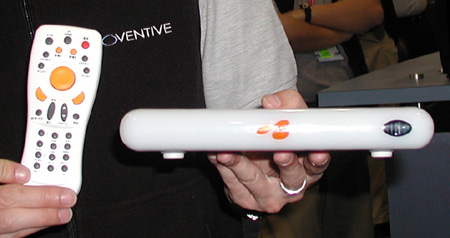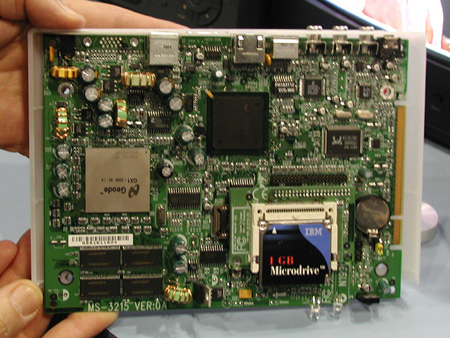Article: Device profile: a Linux-based home TV Internet appliance
Feb 12, 2001 — by Rick Lehrbaum — from the LinuxDevices Archive — viewsThe “canD” is a very small, stylish, easy-to-install Linux-based TV set-top box designed to provide convenient Internet access to beginners and non-computer users. The new consumer Internet appliance is part of a wave of Asian-manufactured Linux-based consumer products that will begin hitting retail shelves this year. The device, which is packaged in a plastic housing roughly the size of a hard-cover book (8.7 x 6.5 x 1.2 in.), has an appearance suitable for use in typical Japanese living rooms — its initial target market.
Unlike many other Internet terminals and set-top boxes, the canD does not require users to operate it with a PC-like keyboard. Instead, canD users navigate TV programming and Internet resources using a familiar, TV-like wireless remote control that enables easy access to email, the Web, and a full range of video and audio entertainment programming.

The canD is the first product to emerge from a collaboration between Japan-based Axis, a designer of computers and peripherals, and Taipei-based Coventive, a provider of embedded Linux solutions for information appliances. Future canD family products will include a mobile wireless Internet appliance, an intercom-integrated information terminal, and a kitchen-specific Internet appliance. The companies also intend to customize and localize the product family to serve markets beyond Japan.
Technical specifics
canD's software is based on Coventive's XTinux embedded Linux operating system along with the Access Netfront browser.

Rear view showing I/O connections
The device's embedded computer is based on a National Semiconductor MediaGX processor, with 8MB ROM and 16MB SDRAM memory. The unit provides 2 USB ports for connection of external peripherals such printers and digital cameras, and a 10/100 Mbit Ethernet port for connection to the Internet. Other external connections include stereo audio output, video out, and S-Video.

Internal view
The canD will become available in Japan during the first half of 2001.
This article was originally published on LinuxDevices.com and has been donated to the open source community by QuinStreet Inc. Please visit LinuxToday.com for up-to-date news and articles about Linux and open source.